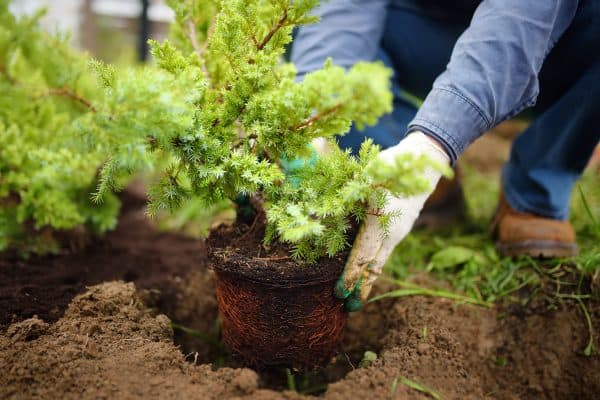Evergreen trees give our landscape a year-round appeal because of their rich green foliage. They add texture and character to the garden, and they are relatively easy to grow when they're planted in an ideal environment. So, what dwarf evergreen trees should you plant for areas in USDA Zone 9? We have researched answers for you.
Dwarf evergreen trees provide visual appeal to the landscape without taking up too much space. Here are dwarf evergreen trees you should try planting in your yard:
- Dwarf Scots Pine
- Upright Japanese Plum Yew
- Tea Olive Tree
- Dwarf Blue Point Juniper
- Japanese Spindle Tree
- Asian Bell Tree
- Spruce Pine Tree
- White Pine Tree
- Japanese Black Pine Tree
- Virginia Pine Tree
- Coastal White Cedar Tree
- Top Point Cedar Tree
- Dwarf Japanese Cedar Tree
- Blue Pyramid Cypress Tree
- Leyland Cypress Tree
Dwarf evergreen trees are ideal to be planted in small spaces, but they can also beautify larger landscapes if you turn them into hedges or borders. Knowing how to take care of these dwarf trees is key to making them live longer. Keep reading below to learn more about these lovely evergreens.
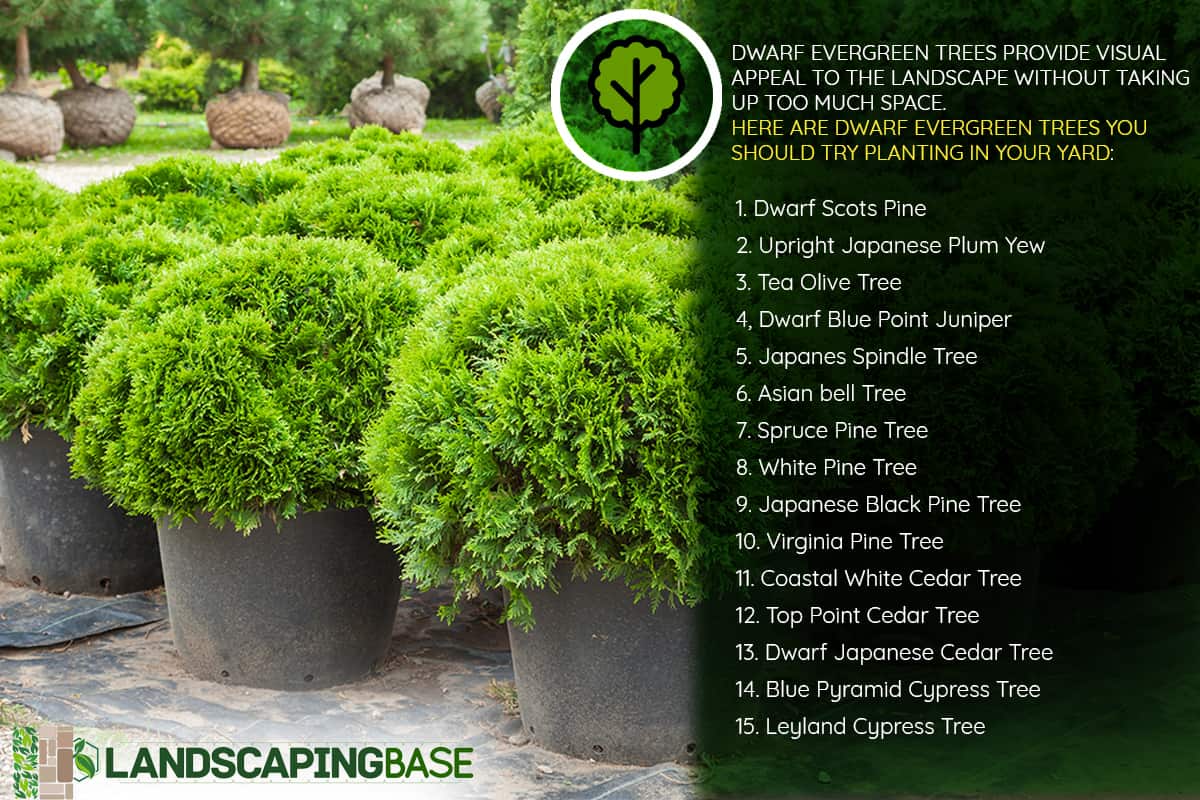
15 Small Dwarf Evergreen Trees For Zone 9
Dwarf trees are formed in three ways: Through genetic engineering, selective breeding, or through natural processes.
Some trees become "dwarfed" when their species haven't received enough nutrients, or if the environment suddenly became unfavorable which caused them to focus their energy on surviving, thus their short height.
Regardless of the circumstances by which they were formed, evergreen dwarf trees have become a landscaping favorite because of their visual appeal and the texture they give to the garden.
Below are dwarf evergreen trees that will thrive in USDA Zone 9.
Dwarf Scots Pine
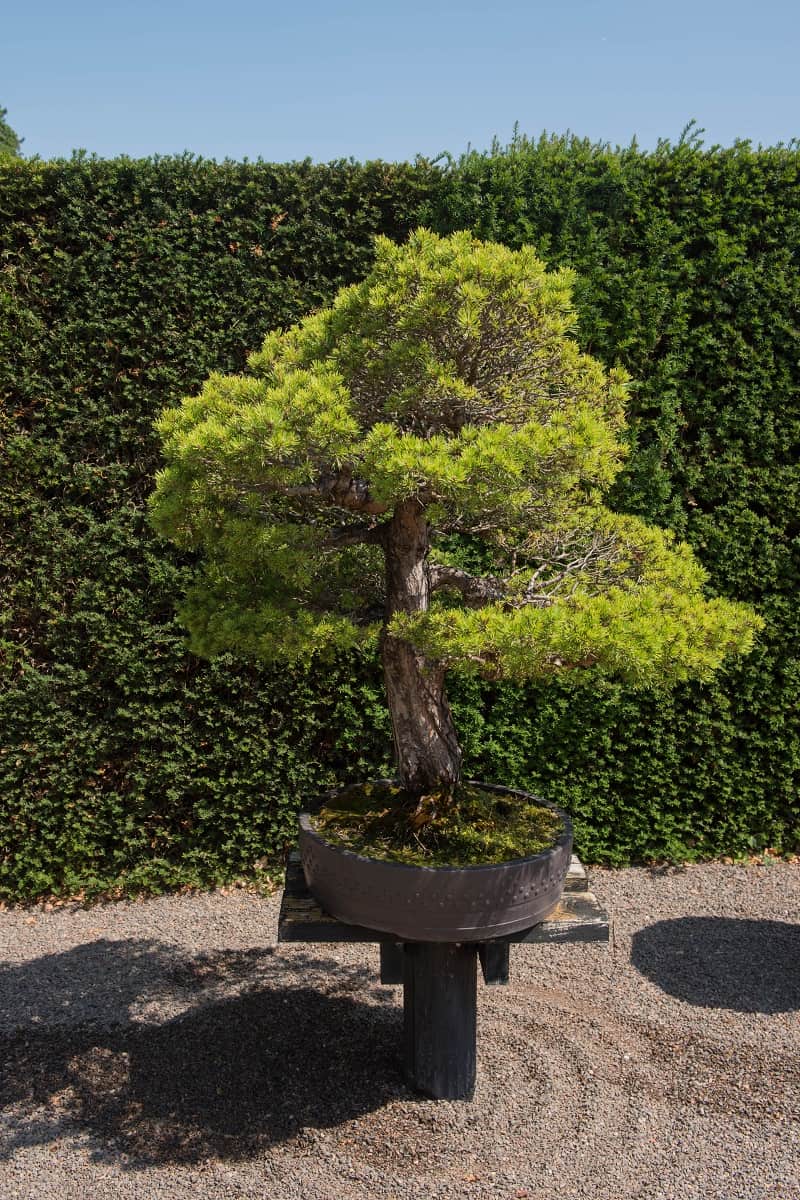
Dwarf Scots pine is perfect for garden borders and hedges because of its bushy and dense form. It can grow for up to 3 meters and grows best in well-draining but moist soil.
Dwarf Scots pine has a distinct appearance because of its needle bundles which each contain 2 to 5 needles.
Make sure to keep this dwarf tree in a place where it can receive full sunlight. Water it during its development stage, and make sure the soil won't dry out. It won't need too much watering once it's established.
Upright Japanese Plum Yew
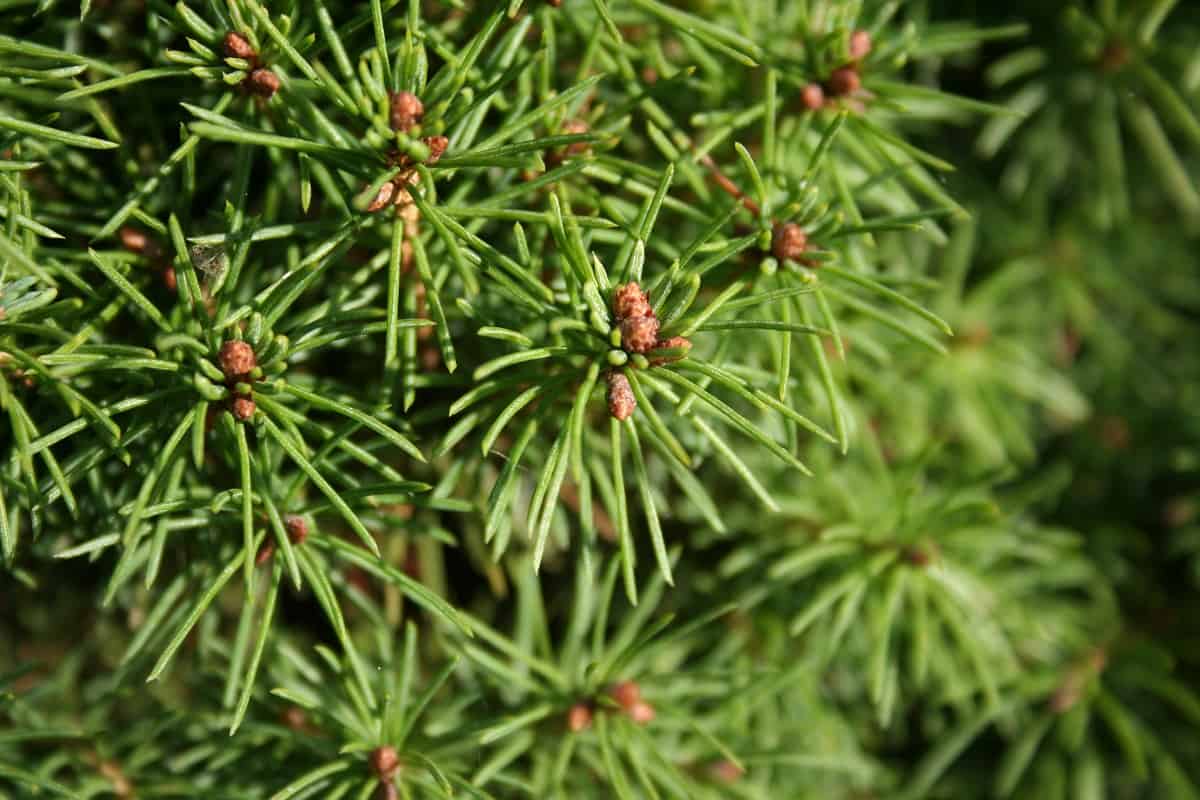
If your landscape doesn't have a lot of access to sunlight, the upright Japanese plum yew is a good option. They thrive under shade, and they are relatively low-maintenance compared to other evergreen dwarf trees.
Since they are multi-stemmed, they can easily grow dense, compact, and bushy.
Dwarf trees from these species can spread up to 3 meters and grow up to a meter, making them ideal for gardens of any size. They have a compact spread so they can be used as privacy screens, and they grow slowly so you won't need to prune them often.
Tea Olive Tree
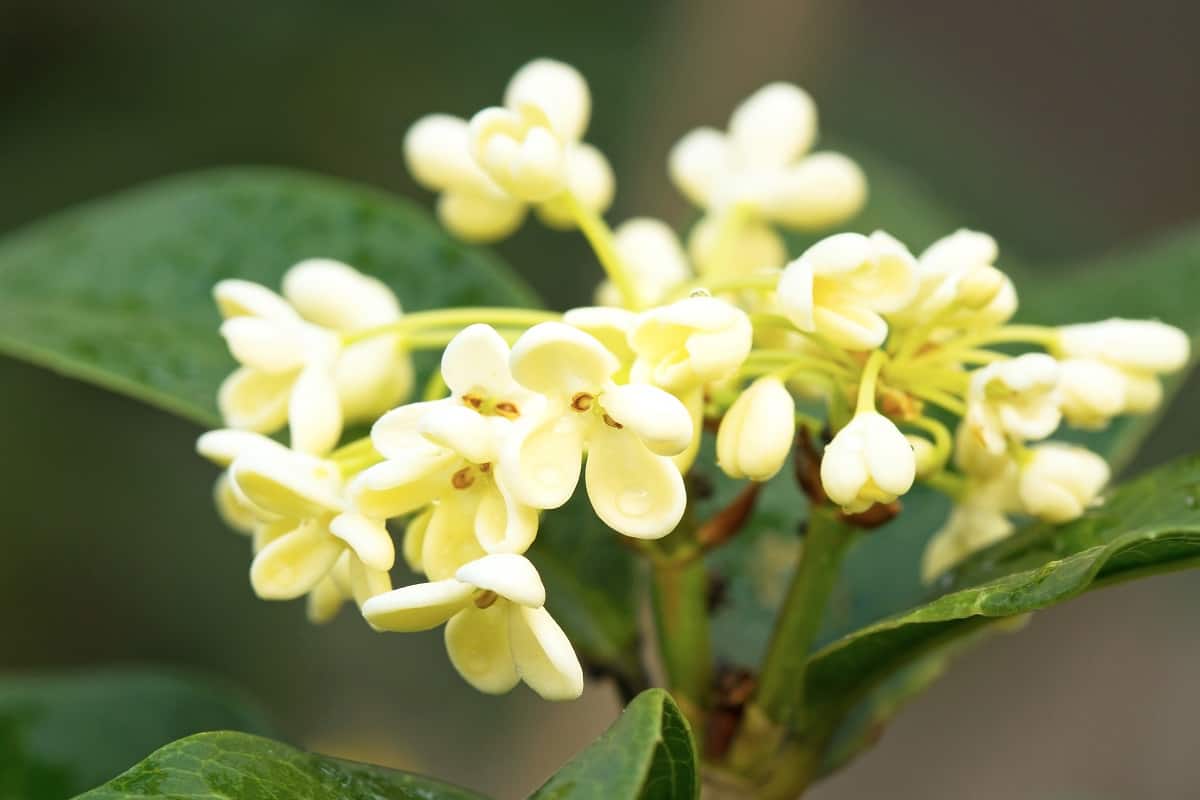
Tea olive trees have attractive foliage that can elevate your landscape's look. They are dense and compact, growing up to 4 meters which is ideal for landscapes of all sizes.
This evergreen shrub produces flowers that emit a sweet scent that resembles peach, which is why it is often used as an ingredient for perfume and tea.
Their flowers bloom during the fall and last for 2 months, and depending on the environmental conditions, they can also produce flowers randomly throughout winter and spring.
Dwarf Blue Point Juniper
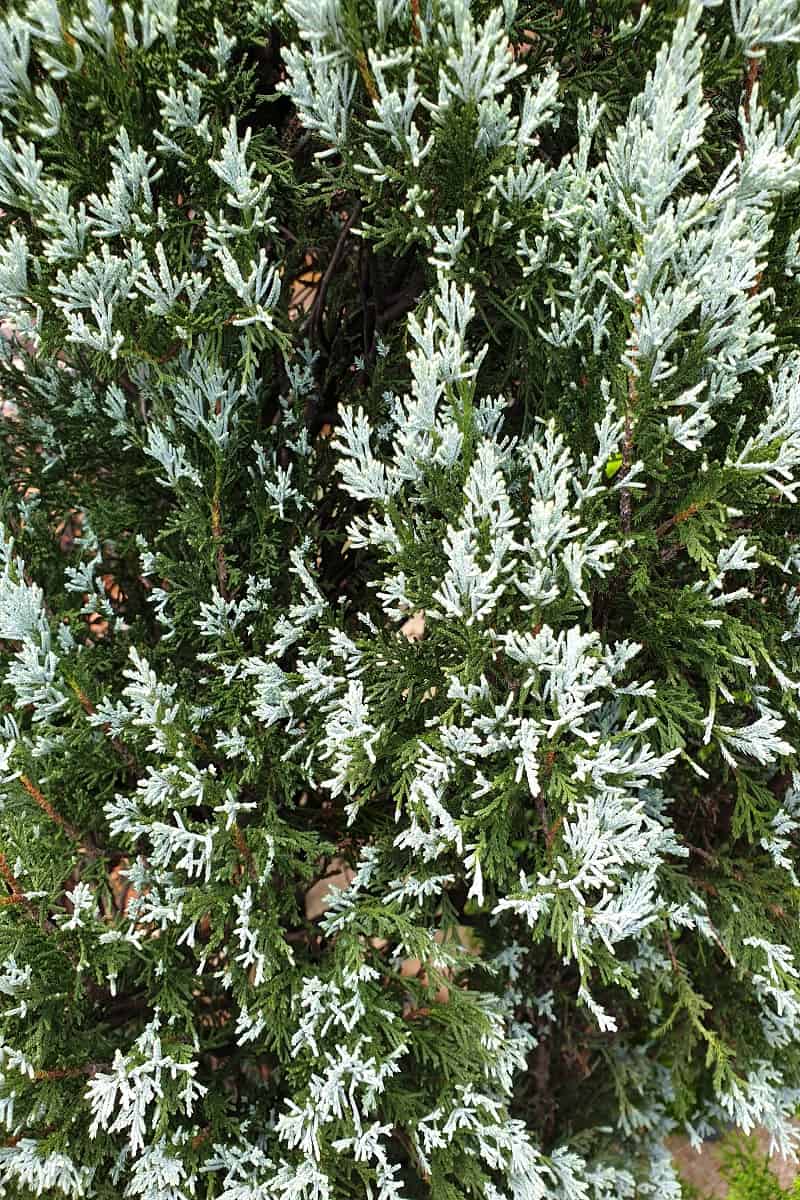
The dwarf Blue Point juniper is an excellent option if you want something that could retain itself without a lot of maintenance. Their blue-green foliage has a cone-shaped form, and they can withstand various weather patterns making them hardy dwarf trees.
Blue Point junipers provide year-round visual interest, but it is emphasized during the winter season since they resemble Christmas trees.
Japanese Spindle Tree
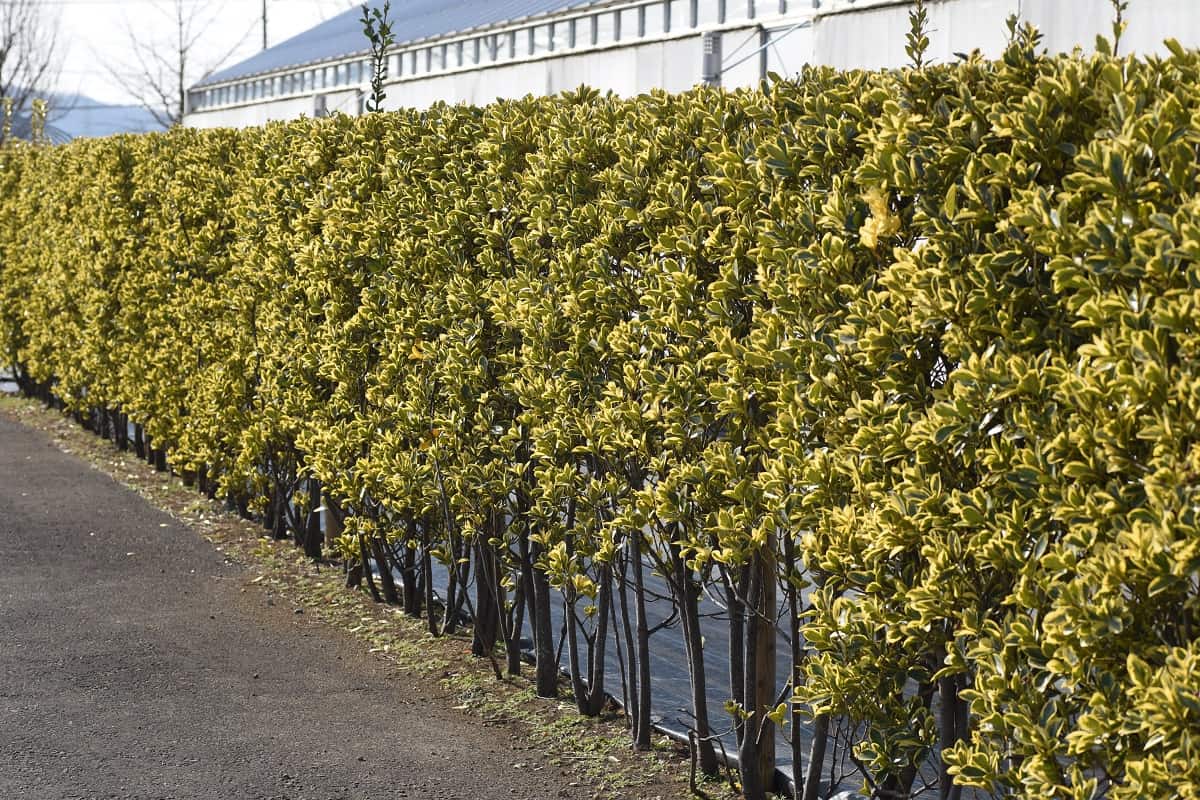
The Japanese spindle is an ornamental evergreen tree that can grow up to 5 meters. They thrive under full sun and survive partial shade, and they need to be planted in well-drained soil to keep the roots from rotting.
These dwarf trees and shrubs can be invasive in the eastern parts of the United States, so practice caution if you want them in your landscape.
Japanese spindle trees have oval-shaped and glossy leaves which can add visual appeal to your landscape. They are also bushy and dense, so they are ideal for creating borders and hedges.
Note that they can be damaged when exposed to harsh winter conditions, so make sure to overwinter them.
Asian Bell Tree
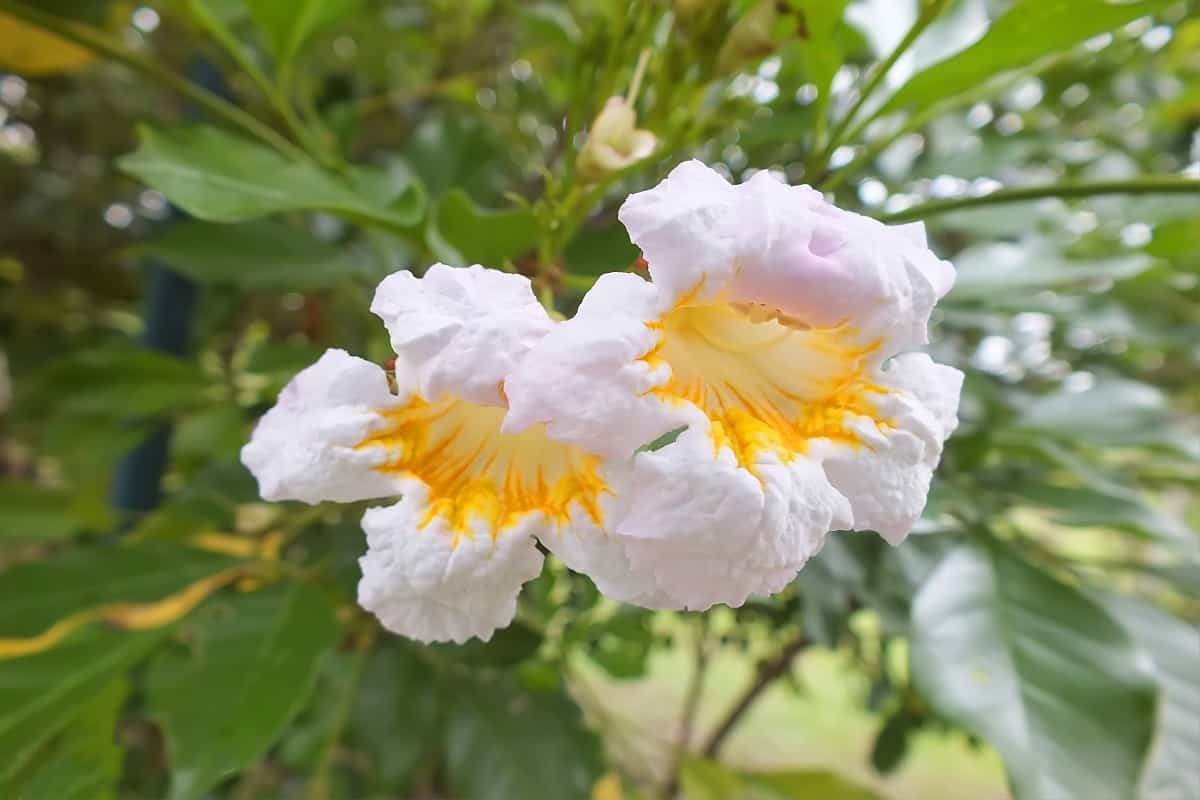
The Asian bell tree is the dwarf counterpart of the China doll plant. They require moist and well-drained soil just as most shrubs and trees do since they don't like to get waterlogged.
Be careful not to overwater them and only give them water to prevent the soil from drying out. Make sure to prune them regularly so they don't go out of control and look awkward or leggy.
Spruce Pine Tree
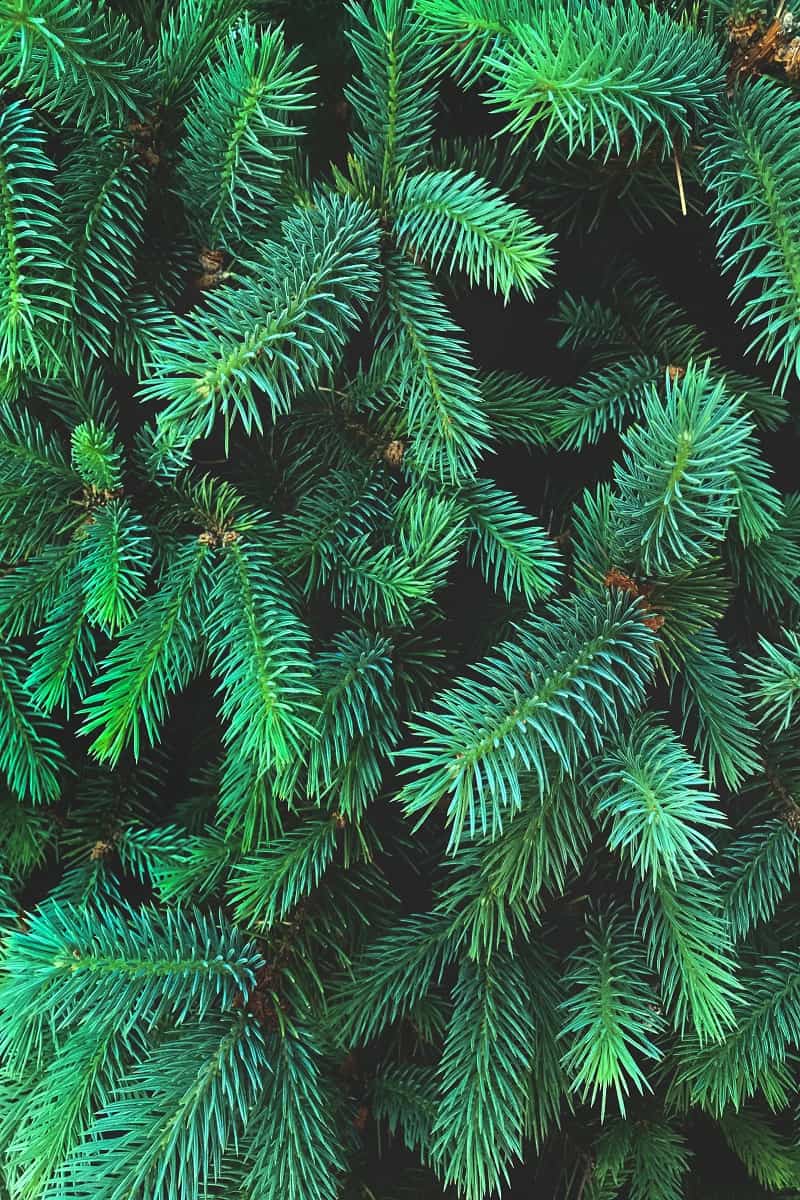
Spruce pine trees are another one of the common cone-shaped evergreens that are featured in most landscapes.
Dwarf varieties are a popular pick, especially among homeowners who don't have enough landscape space but still want the visual appeal of spruce pine trees in their yards.
They require an inch of water per week, especially during short periods of drought. You'll also need to increase the amount of water nearing fall and winter to prepare them so you would have evergreen foliage throughout the cold season.
White Pine Tree
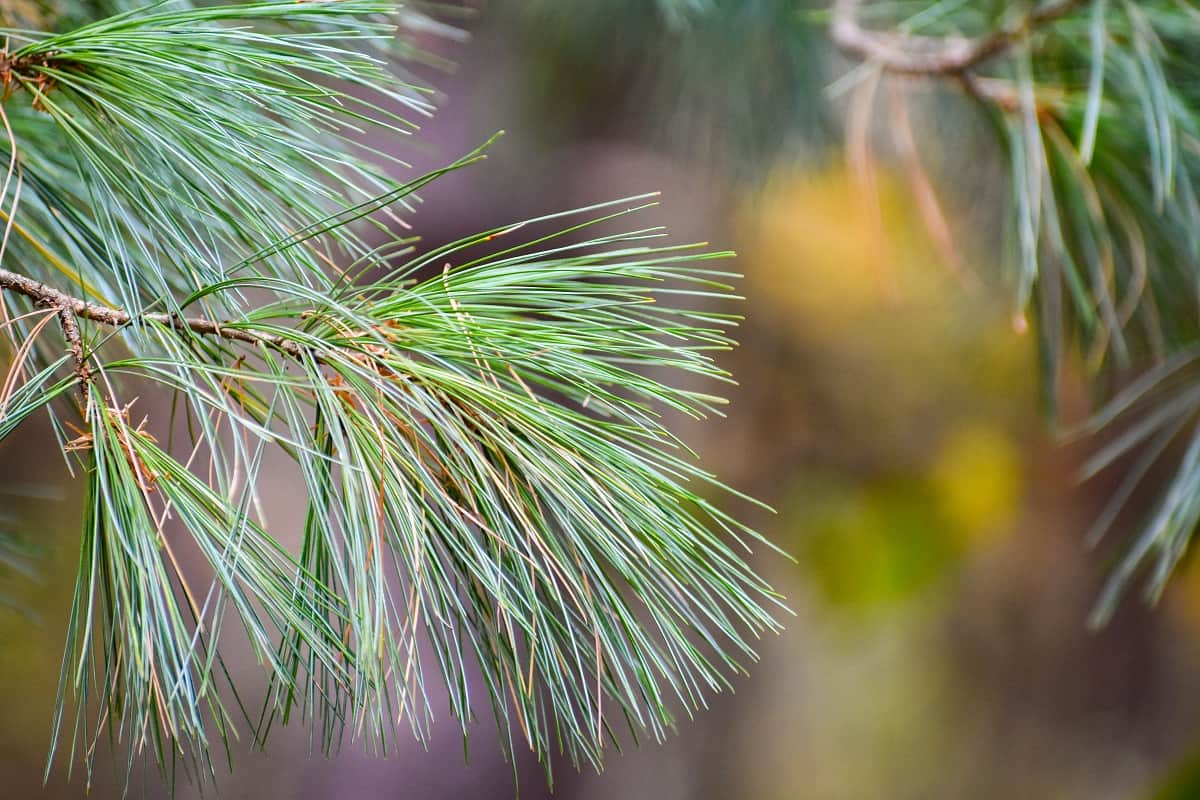
Pinus Strobus "Nana" is the dwarf alternative of this variety. Despite its name, white pine trees don't actually have white needles. Instead, they have bluish-green foliage that can give your landscape a year-round appeal.
Dwarf white pine trees have a dome-shaped form as opposed to the full tree's cone shape. Its unique form gives it a visually interesting look especially when paired with taller shrubs.
They have needle leaves, and their colors range from blue, gold, yellow, silver, and green. White Pine Trees survive partial shade, but it thrives best under full sunlight.
Japanese Black Pine Tree
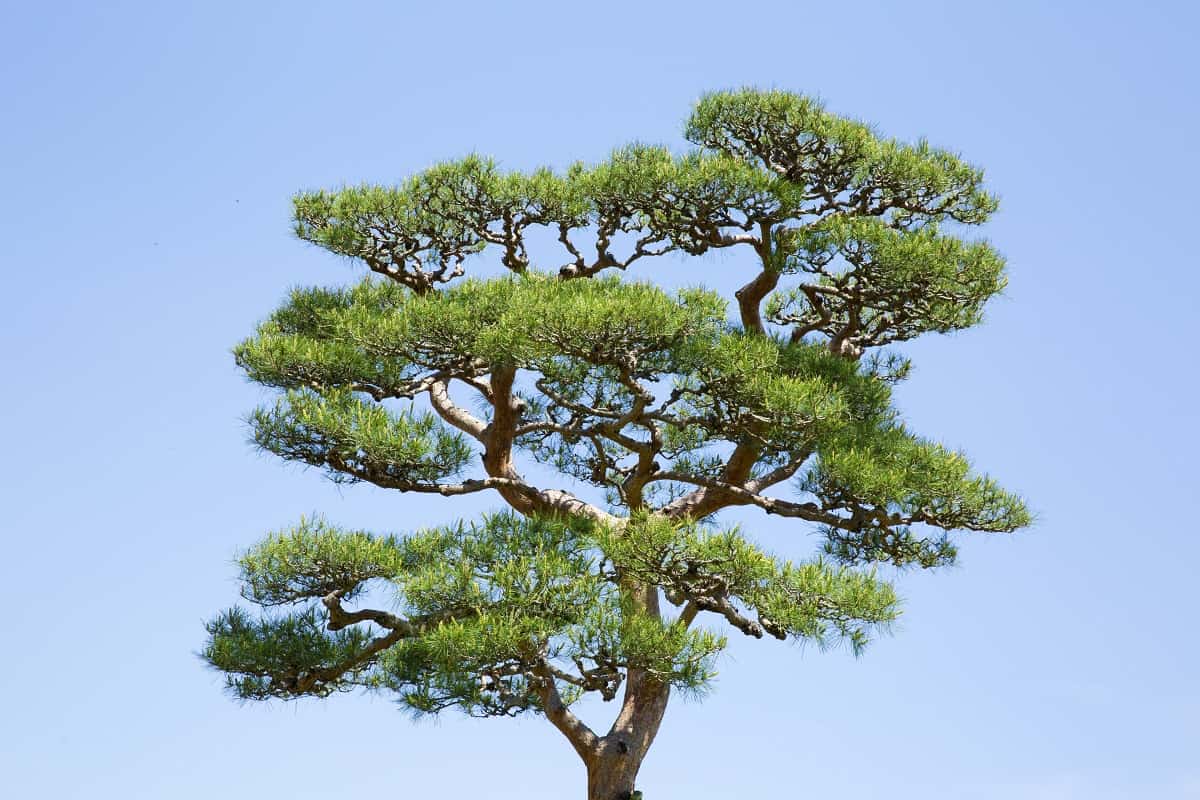
Dwarf cultivars of the Japanese black pine tree only grow for up to 3 meters, making it more accessible and mobile especially for homeowners who have smaller landscapes. They have a unique form, their needled leaves being irregular.
Their branches are also not tightly intertwined since they have droopy branches, twisting around so that it has a more curved form.
Virginia Pine Tree
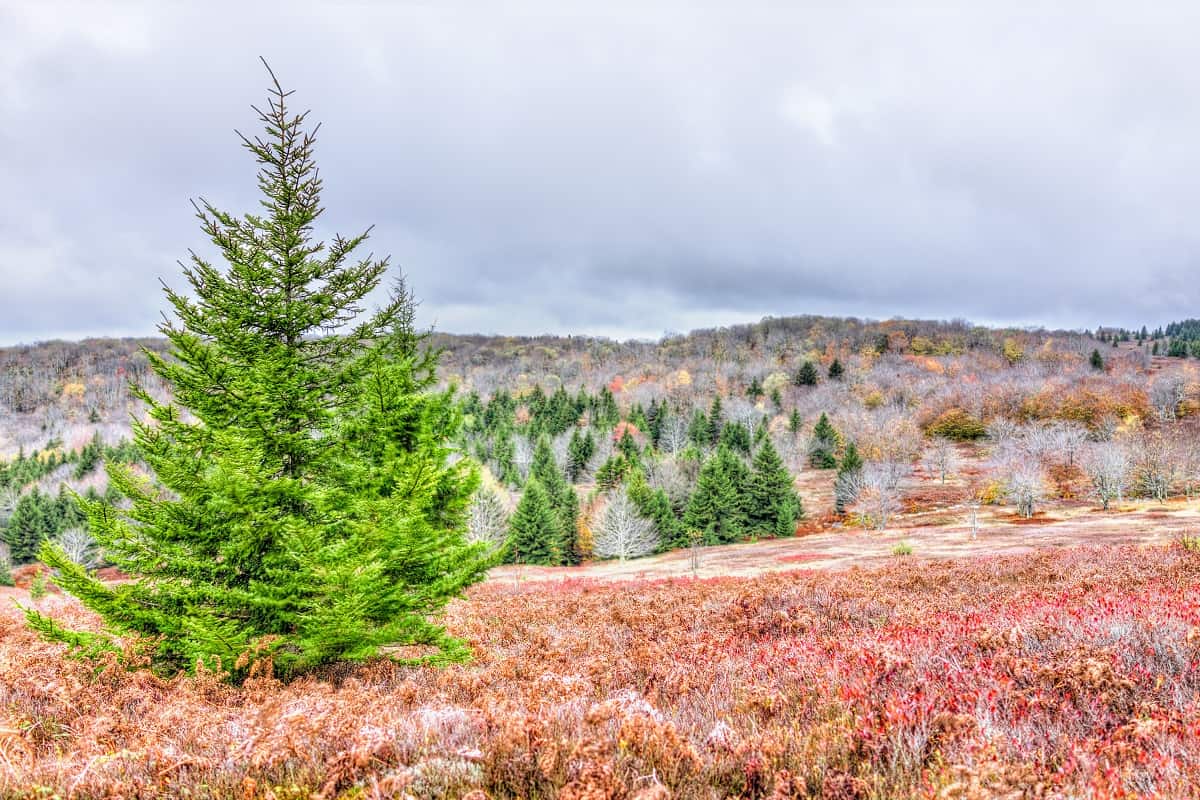
The Virginia pine tree grows with a horizontal, cone-shaped, and flat-topped form especially when it is pruned and developed properly. They need access to full sunlight in order to grow, and they require well-drained acidic loam soil.
However, they can be very hardy, tolerating low-quality soil although it may affect their growth and development.
Coastal White Cedar Tree
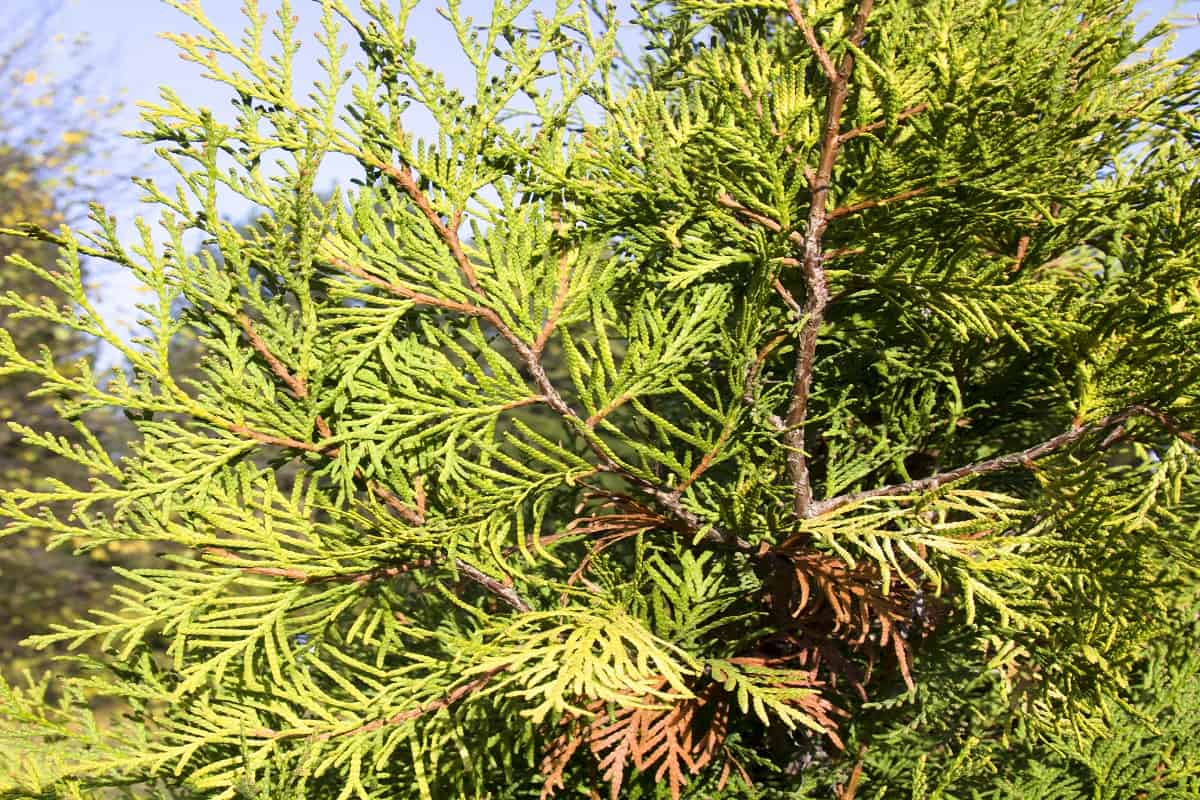
Coastal White Cedars are dwarf conifers that thrive in well-drained soil. They need access to the full sun so that they can develop well, and they need at least 1 inch of water per week once they have been established.
If you plant them in warm areas, they require a lot of irrigation so the soil won't dry out.
Top Point Cedar Tree
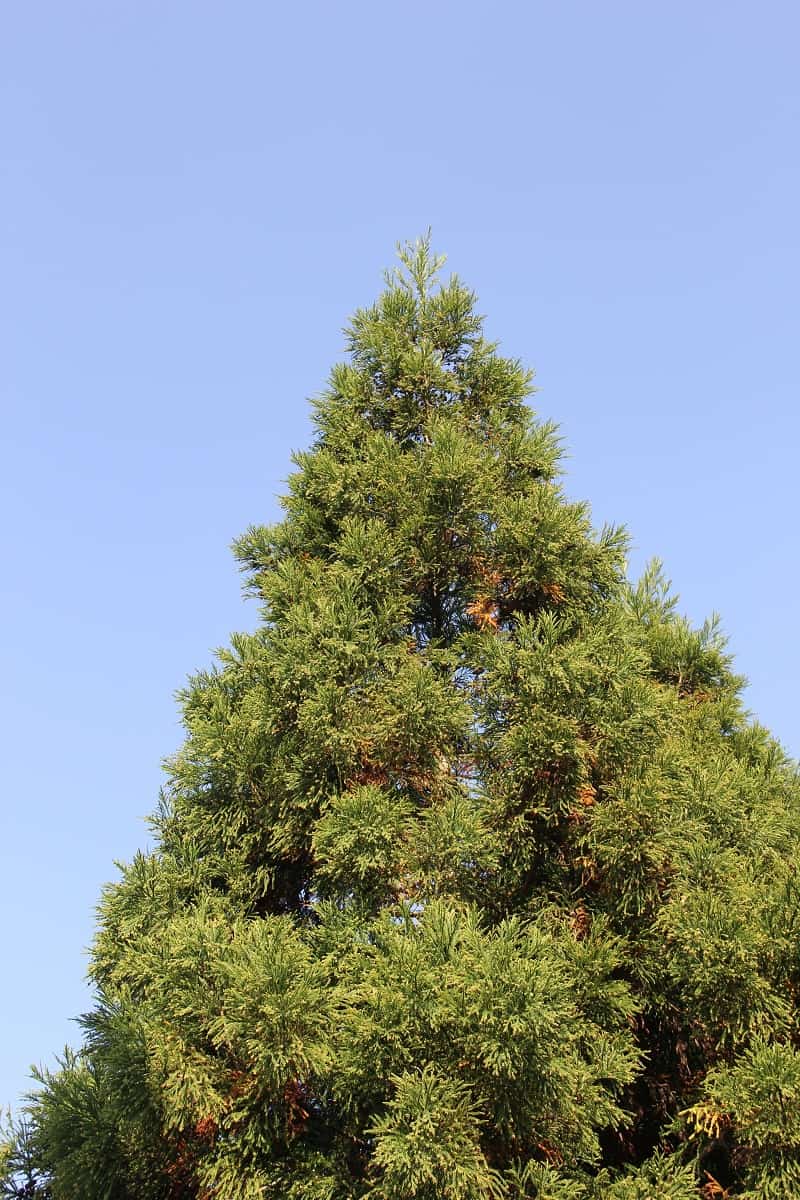
Top point cedar trees can grow for up to 4 meters at maturity. They are attractive evergreen dwarf trees, and they can be extremely hardy as they tolerate periods of drought.
They provide year-round and seasonal appeal as they can produce flowers during the spring, summer, and fall.
These trees are resistant to pests and insects, making them relatively low-maintenance. They can even be planted next to other shrubs that tend to attract pests. In a way, they can be repellent.
Dwarf Japanese Cedar Tree
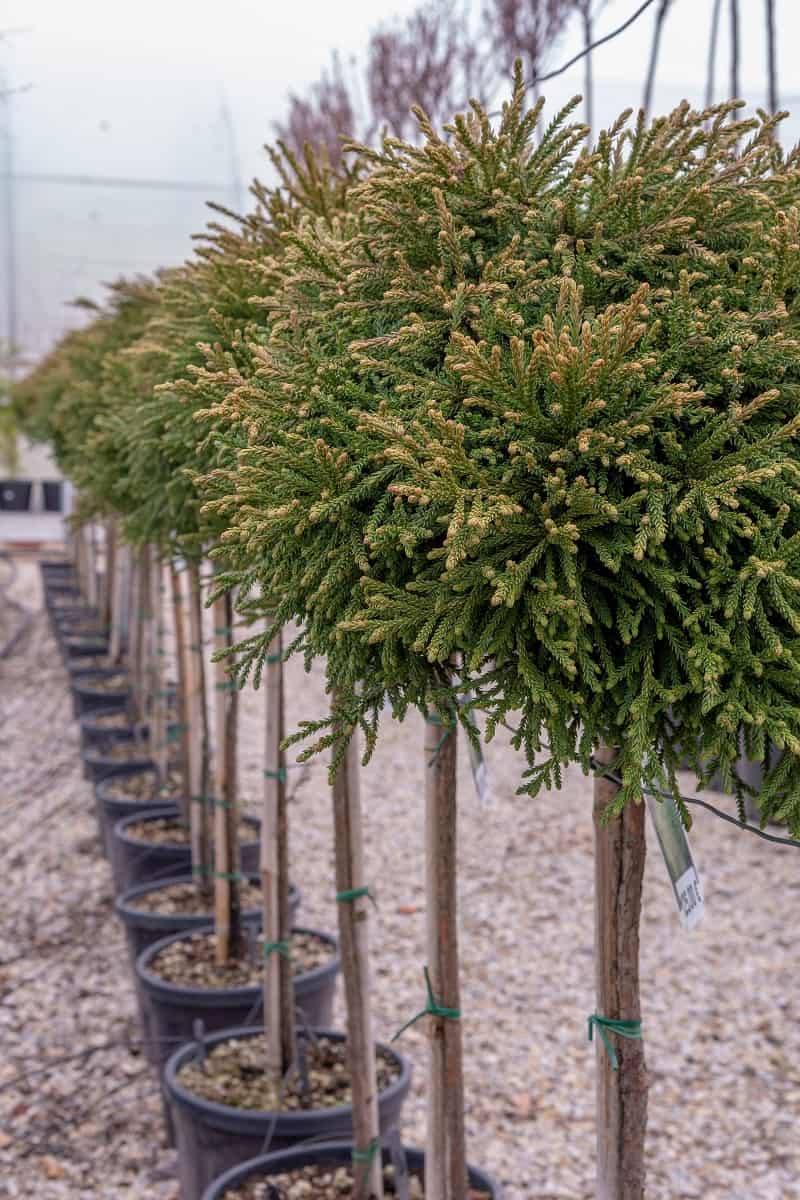
Japanese cedar trees have visually-alluring short needle leaves that are tipped with yellow at the end. They mostly have a blue-green color, and their foliage turns into a russet shade during the winter, providing seasonal appeal.
Blue Pyramid Cypress Tree
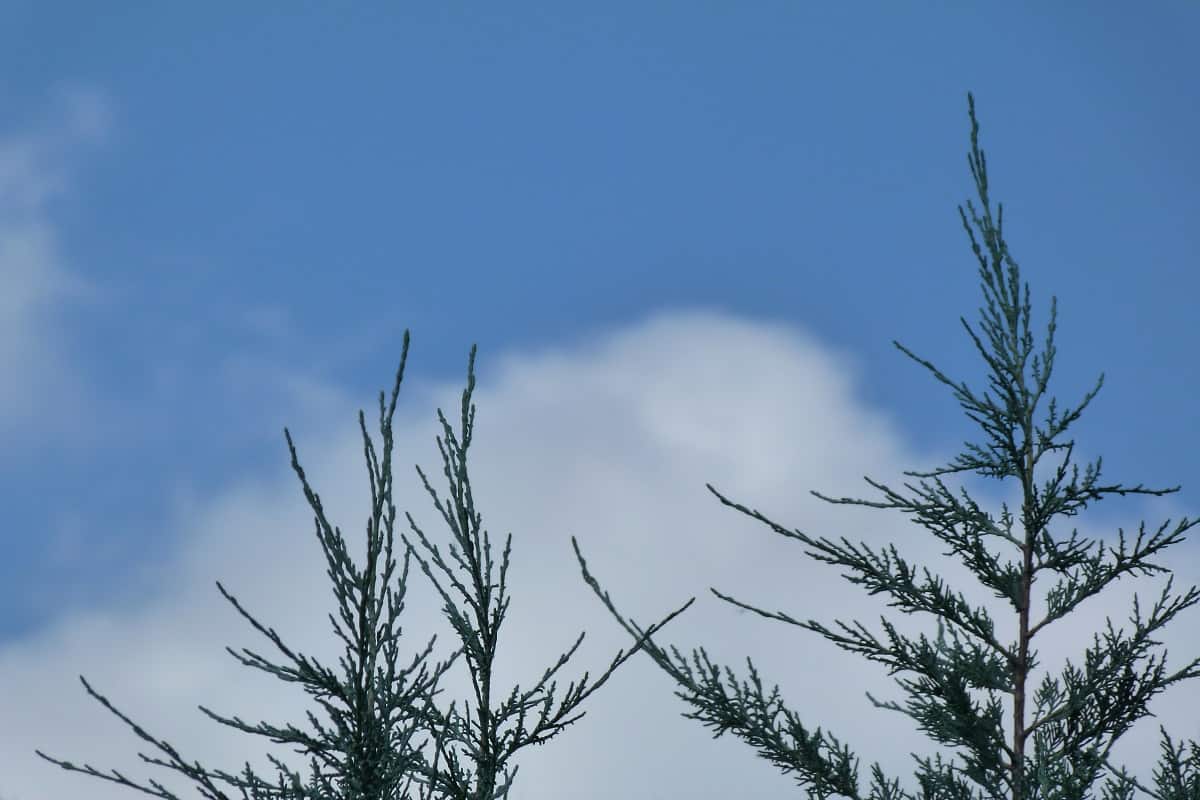
Blue pyramid cypress trees have attractive silver-blue foliage that will look lovely against the sun. They are drought-tolerant, making them hardy plants that won't require too much maintenance.
Prune them sparingly so they can retain their form throughout the year.
Leyland Cypress Tree
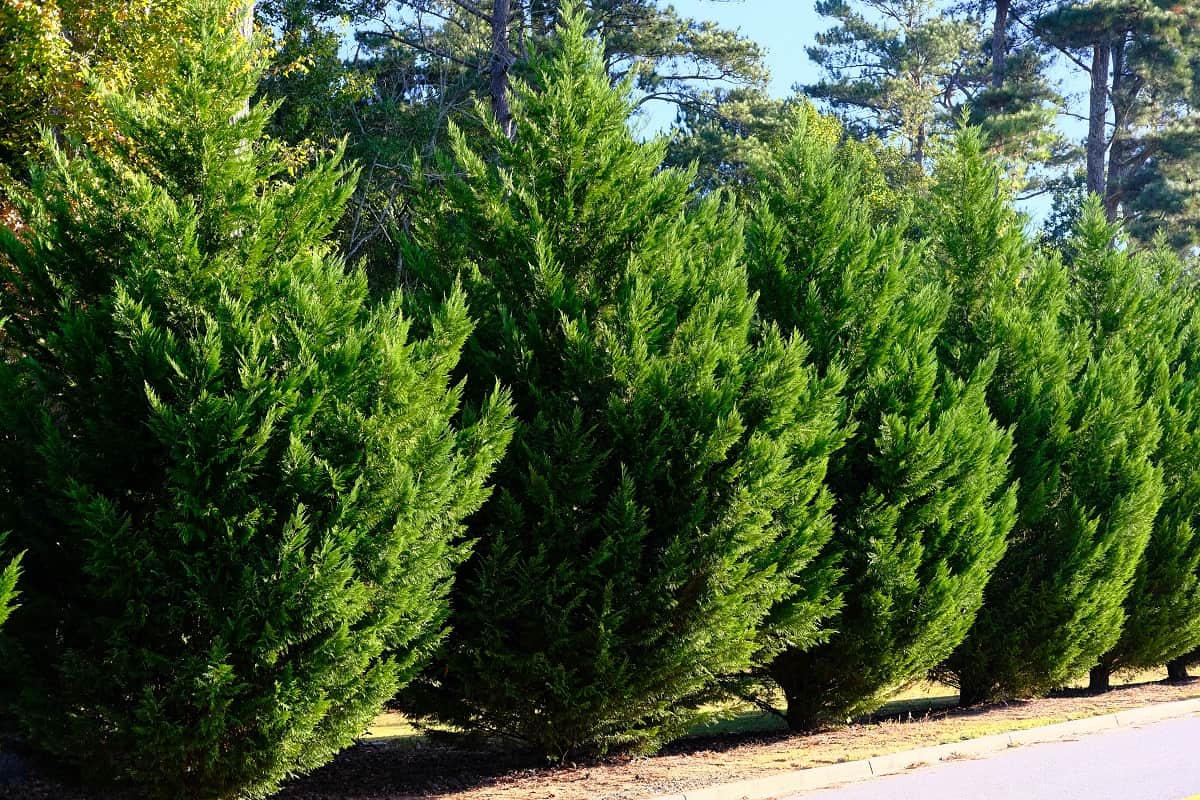
Leyland cypress trees have textured foliage that can add character to your landscape. They only last for about 20 years, so they have a shorter lifespan compared to other trees and shrubs.
They tend to attract bagworms, so make sure to remove them to prevent damage to the tree.
Final Thoughts
Zone 9 tends to have mild temperatures, so they can be friendly to most dwarf trees. However, you still need to do your part in taking care of the tree to make sure it lasts long and benefits the landscape consistently.
Before you go, check out these related posts:

![man replanting herb with yellow flowers for use in landscaping. 15 Perennials That Absorb Water [Incredible Choices For Foundation Landscaping]](https://landscapingbase.com/wp-content/uploads/2022/09/man-replanting-herb-with-yellow-flowers.-15-Perennials-That-Absorb-Water-600x400.png)
![Big custom made luxury house with nicely trimmed and landscaped front yard, South Facing Front Yard Landscaping Ideas [17 Ideas To Increase Your Curb Appeal]](https://landscapingbase.com/wp-content/uploads/2022/09/BIGCUS1-600x400.jpg)
